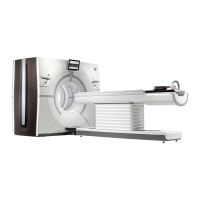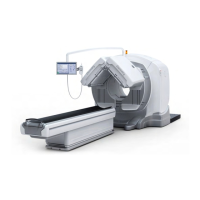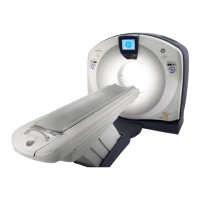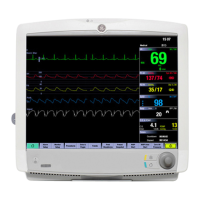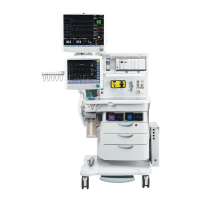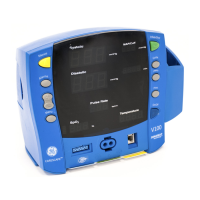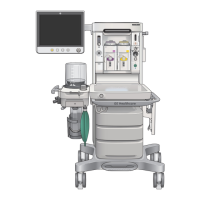GE MEDICAL SYSTEMS CT 9800 QUICK SYSTEM
Rev. 16 Direction 18000
8-7-3
Troubleshooting Solution
Always use a 1/8” pin when checking or performing ISO alignment. This applies to 9800 Xenon detectors as
well.
ISO Symptom 2:
There is an interaction between the Radial alignment (which is new to HiLight) and the ISO alignment. This is the
reason for doing a rough ISO before the Radial alignment, then final ISO. The person doing the adjustments
may recheck Radial after final ISO, and find that it has moved from the previous setting. (This is possible.) If the
Radial is subsequently re-adjusted, ISO may now be out again. If it is not checked, the aliasing condition could
be caused.
Troubleshooting Solution
Evaluations have shown that the system sensitivity to the Radial alignment is much less than the sensitivity to
ISO. If a rough ISO is done per procedure before the Radial alignment, the final ISO shouldn’t affect the radial
adversely. No matter what checking or re-aligning is done; however, final ISO must be the last tube
adjustment.
An Imaging Test to Verify ISO Results
A scan of the resolution bar pattern section of the GE 46-241852G1 QA phantom provides a good test to verify
the proper ISO alignment. Section 12-9-3 of Chapter 4 in the System Manual Direction 18000 describes the scan
and analysis for the MTF determination of the system. A retro recon of that same scan on 12.8cm FOV and the
Edge algorithm provides a good image check of ISO alignment integrity. The scan technique is repeated here as
follows:
1. Center the QA phantom on the water section.
2. Scan the bar pattern at: 120KV/170mA/10mm/2sec/SML. Edge-12.8cm FOV-512
2
.
The image noise in the plastic material around the bar patterns should have a random salt and pepper
characteristic. If ISO is not right, fine streaks will form off the ends of some or all of the bars. In some cases,
the streaks will be in line with but not attached to the bar patterns.
In the case where ISO is marginal, the streaks tend to begin to show up on bars B and C first. As ISO is farther
off, the other bar patterns begin to streak and the intensity becomes deeper on all of them.
Recommendation: Routinely perform this imaging test along with the image tests normally done after an
alignment and image calibration. In addition, if there is a complaint of streaking by the customer, this is a good
test to help isolate to an ISO problem or something else.
NOTE: There are other causes of streaks. Don’t assume that ISO alignment solves all. Several other causes
might be: Partial volume in the slice thickness plane, the Posterior Fossa in heads being a good
example. Using thinner slices helps this. Patient motion will also cause aliasing streaks for high
resolution scans. When using the high resolution algorithms heads should be strapped to the head
holder, and body scans taken during a breath hold.

